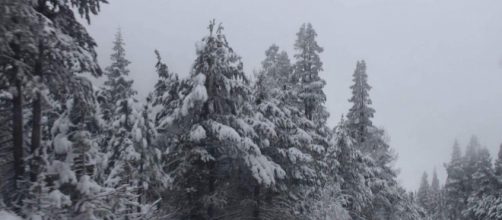Record snow levels
Massive amounts of snow are being dumped this year on Sierra Nevada. Winter storms in the last few months have snowed residents in and made for some pretty nasty road conditions across the West, from Colorado and Utah, to Wyoming. Lake Tahoe residents were recently asked to shovel snow off of roofs in order to avoid weight-related cave-ins. In the midst of all this snowfall, questions swirl about the status of the five-year California drought. Did 2017 break it?
"Januburied": #Snow breaks records in California's Sierra Nevada: https://t.co/0rZuq1nmIo pic.twitter.com/26ES343O9V
— The Weather Channel (@weatherchannel) January 25, 2017
This year, California snowpack has reached 173% of the average.
The snow melt and runoff in the coming weeks and months will essentially refill water reservoirs across the state. Already, snowpack levels are at a 22-year high and the season's not yet through. The last time Sierra Nevada saw snow levels to this extreme degree was in 1995. The state's largest reservoir, Lake Shasta, was reportedly 83% full as of January 12, which will greatly benefit San Joaquin Valley agriculture. Shasta Reservoir is actually California's largest man-made lake and has a gross pool storage capacity of 4,552,000 acre-feet, this runoff is absolutely essential to the health of northern California, but the real water problem lies in the south.
Close, but no cigar
The areas of greatest need are clustered in Southern California (affecting Los Angeles and Orange County, chunks of Ventura, and Santa Barbara).
These areas depend on water from Lake Cachuma, which is currently at 12% capacity. In the last week, a promising breach in the Gibraltar Reservoir started sending higher flows into Lake Cachuma.
An overflow in the Gibraltar Reservoir has not occurred in the last six years and is largely a result of the significantly wet winter California is currently experiencing.
Still, local SoCal water officials are calling for continued vigilance where water conservation is concerned in the coming months. Governor Jerry Brown, who originally declared the state of emergency in California due to drought conditions, will re-evaluate conditions in April, after the bulk of rain and snowfall subsides.

